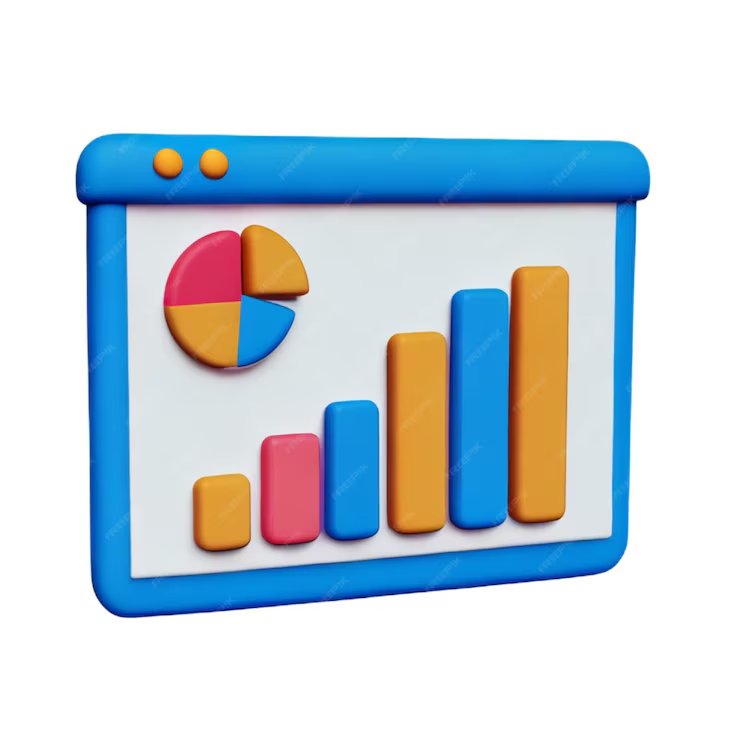As the digital landscape continues to evolve, capturing and analyzing data has become an essential part of any successful marketing strategy. The ability to make data-driven decisions is crucial in today’s competitive business environment.
78% of B2B marketers, and this number is rising, monitor how their promotional efforts affect their companies’ income, according to Adobe Experience. It demonstrates how important marketing analytics measurement and research are to the growth of businesses.
This is where marketing analytics comes into play to take your business to new heights. In this article, we will explore what marketing analytics is, why it is important, and delve into the different types of marketing analytics that can provide valuable insights for businesses.
What is marketing analytics?

Marketing analytics refers to the practice of measuring, managing, and analyzing data from various marketing channels and tactics to improve marketing effectiveness and drive better business outcomes. It involves collecting and interpreting vast amounts of data to gain insights into customer behavior, identify trends, measure campaign performance, optimize marketing activities, and make informed decisions that lead to business growth.
Marketing analytics encompasses a wide range of techniques and tools that help businesses understand customer preferences, track their journey across different touchpoints, measure the impact of marketing initiatives, and quantify return on investment (ROI). By harnessing the power of data through advanced analytical methods, marketers can gain a deeper understanding of their target audience and tailor their strategies accordingly.
Why is marketing analytics important?
In today’s digital age, businesses have access to unprecedented amounts of data generated through various channels such as social media, websites, email campaigns, and more. However, raw data alone does not provide actionable insights. Marketing analytics plays a vital role in transforming raw data into meaningful information that can drive decision-making.
1. Improved decision-making: Marketing analytics enables businesses to make data-driven decisions by providing accurate and timely information. It helps marketers identify which strategies are effective and which are not by analyzing key performance indicators (KPIs) such as website traffic, conversion rates, customer engagement metrics, and more.
2. Enhanced customer understanding: By analyzing customer data collected from multiple sources such as CRM systems or social media platforms, businesses can gain a comprehensive understanding of their customers’ preferences, behaviors, and needs. This allows them to create targeted marketing campaigns that resonate with their target audience and build stronger customer relationships.
3. Optimization of marketing efforts: Marketing analytics helps optimize marketing activities by providing insights into the performance of various channels and campaigns. Marketers can identify which tactics are driving the most ROI, allocate resources more effectively, and fine-tune their strategies based on data-driven insights.
4. Personalization and segmentation: Through marketing analytics, businesses can segment their audience based on different factors such as demographics, behavior, or purchase history. This enables marketers to create highly personalized experiences and deliver targeted messages that are more likely to resonate with individual customers.
5. Improved Return on Investment (ROI): Marketing analytics allows businesses to measure the success of their marketing efforts in terms of ROI. By tracking key metrics and analyzing the impact of different marketing activities on revenue generation, organizations can allocate their budgets effectively and prioritize initiatives that deliver the highest return.
6. Competitive Advantage: In today’s highly competitive marketplace, organizations that leverage marketing analytics gain a significant edge over their competitors. By harnessing the power of data-driven insights, businesses can uncover hidden opportunities, identify market trends, and stay ahead of the curve.
Types of Marketing Analytics
There are several types of marketing analytics that businesses can leverage to gain valuable insights and drive better results. Let’s explore each type in detail:
1. Descriptive Analytics
Descriptive analytics focuses on summarizing historical data to provide insights into past trends and events. It helps businesses understand what has happened in the past by analyzing key metrics such as website traffic, social media engagement, sales revenue, customer acquisition costs, and more.
One example of descriptive analytics is a monthly sales report that highlights the total number of units sold, revenue generated, and average order value for a specific period. By analyzing this data, businesses can identify patterns or trends in sales performance over time.
2. Diagnostic Analytics
Diagnostic analytics goes beyond descriptive analytics by digging deeper into the data to understand why certain events occurred. It helps identify the root causes behind specific outcomes or trends by analyzing multiple variables and the relationships between them.
For instance, if a marketing campaign did not achieve the desired conversion rates, diagnostic analytics can help pinpoint potential reasons for underperformance. It may reveal that a particular ad creative was not resonating with the target audience or that the campaign was targeting the wrong segment.
3. Predictive Analytics
Predictive analytics uses historical data and statistical modeling techniques to forecast future outcomes or trends. By analyzing patterns and relationships in the data, businesses can make informed predictions about customer behavior, market trends, or campaign performance.
For example, predictive analytics can help businesses identify which customers are most likely to churn or which leads are most likely to convert into paying customers. This enables marketers to take proactive measures to retain customers or optimize lead nurturing strategies.
4. Prescriptive Analytics
Prescriptive analytics takes predictive analytics a step further by providing recommendations on actions that should be taken based on the predicted outcomes. It leverages advanced algorithms and modeling techniques to simulate different scenarios and determine the best course of action.
For instance, if a marketing campaign is not performing well, prescriptive analytics can suggest alternative strategies or recommend adjustments to optimize campaign performance. It provides actionable insights that guide decision-making and drive better results.
5. Behavioral Analytics
Behavioral analytics focuses on understanding how customers interact with a brand across various touchpoints. It involves tracking user behavior, such as website navigation paths, time spent on different pages, clicks, conversions, and more.
By analyzing behavioral data, businesses can gain insights into customer preferences, pain points, and motivations. This information helps marketers create personalized experiences and optimize customer journeys to drive engagement and conversions.
6. Customer Lifetime Value (CLV) Analysis
Customer Lifetime Value analysis focuses on quantifying the long-term value each customer brings to a business. By calculating CLV, businesses can understand the profitability of acquiring and retaining different customer segments.
CLV analysis takes into account factors such as average purchase value, purchase frequency, customer lifespan, and referral potential. It helps marketers prioritize resources towards high-value customers and develop strategies to maximize customer lifetime value.
Use Case of every type of analytics

Let’s explore some real-world examples of how different types of marketing analytics can be applied:
1. Descriptive Analytics: A retail company analyzes sales data to identify the most popular products, peak sales periods, and customer preferences. This information helps them make informed inventory management decisions, optimize pricing strategies, and plan targeted marketing campaigns.
2. Diagnostic Analytics: An e-commerce company analyzes website analytics data to understand why a particular product page has a high bounce rate. They discover that the page takes too long to load, leading to poor user experience. By identifying this issue, they can optimize the page speed and improve conversion rates.
3. Predictive Analytics: A software company uses predictive analytics to forecast customer churn rates. By analyzing historical data and customer behavior patterns, they can identify customers who are at a higher risk of churning. This allows them to implement proactive retention strategies and reduce customer attrition.
4. Prescriptive Analytics: A travel agency uses prescriptive analytics to optimize its digital advertising campaigns. By simulating different scenarios and testing various combinations of ad placements, targeting options, and messaging, they can determine the most effective strategy that maximizes conversions and ROI.
5. Behavioral Analytics: An e-learning platform analyzes user behavior on their website to personalize course recommendations based on individual interests and learning styles. By tracking users’ interactions with different content types, they can deliver a personalized learning experience that increases engagement and knowledge retention.
6. Customer Lifetime Value (CLV) Analysis: A subscription-based business calculates CLV for different customer segments to optimize its loyalty program. By identifying high-value customers, they can offer tailored rewards or incentives that increase customer loyalty and drive repeat purchases.
In conclusion
Marketing analytics is an indispensable tool for businesses looking to gain a competitive edge in today’s data-driven world. By harnessing the power of data through descriptive, diagnostic, predictive, prescriptive analytics, behavioral analytics, and CLV analysis, marketers can gain valuable insights into their target audience’s preferences, optimize marketing efforts for better ROI, and drive business growth.
As technology continues to advance, the importance of marketing analytics will only grow. Businesses that embrace data-driven decision-making and invest in advanced analytics capabilities will be better positioned to adapt to changing market dynamics, deliver personalized customer experiences, and stay ahead of the competition.
So, don’t miss out on the opportunity to leverage the power of marketing analytics and unlock new growth opportunities for your business. Be sure to get in touch with experts like Konnect Insights to learn more and implement the right strategies for your business.






























